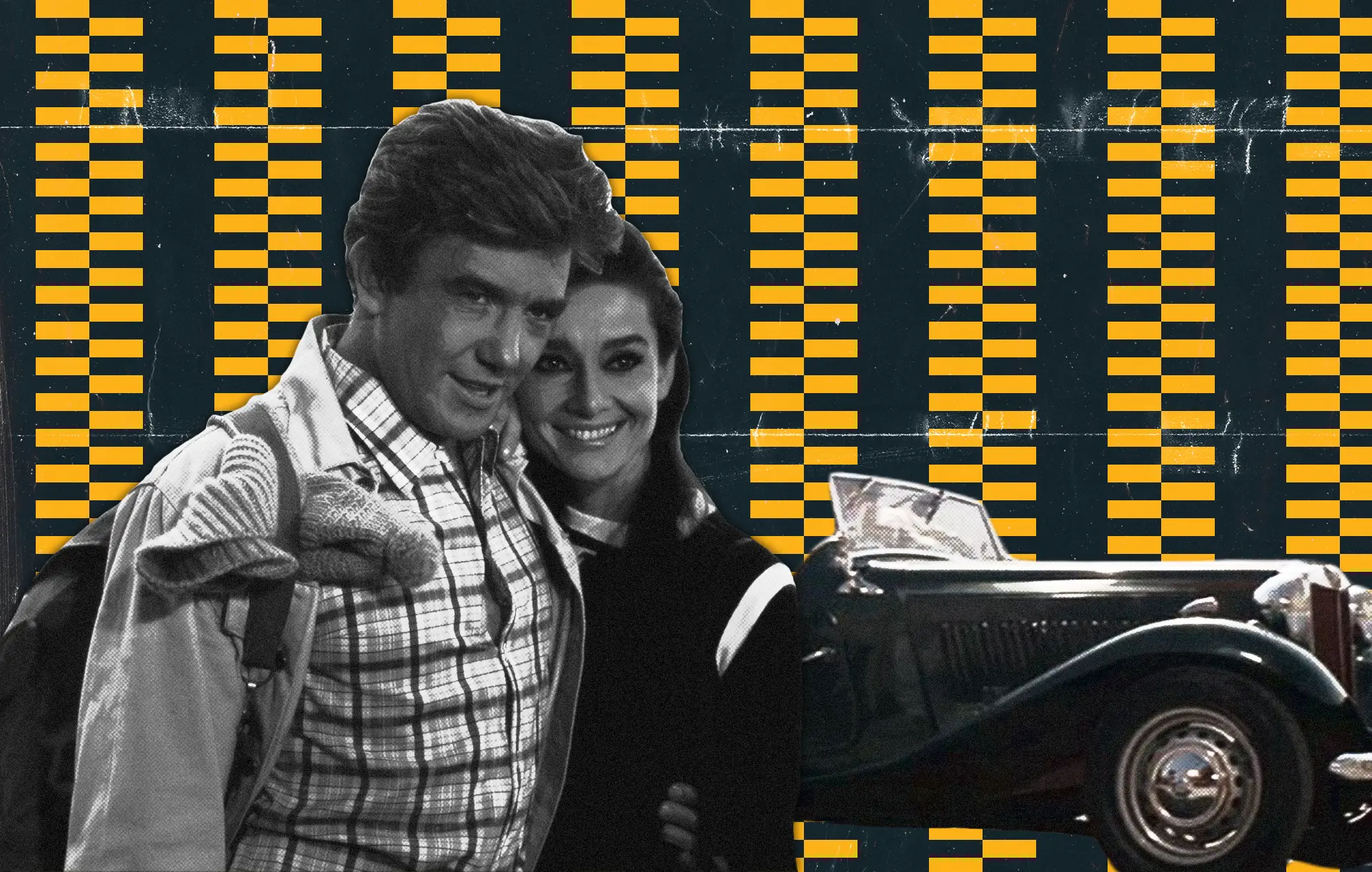Two for the Road is the one of the most underrated masterpieces in the annals of film’s archives. Decades ahead of its time, it set the standard for today’s experimental romantic comedy 53 years ago.
Stanley Donen’s (Singin’ in the Rain) romantic drama is more akin to a series of non-linear vignettes of a couple falling in and out of love than to the traditionally-structured, three-act film. Frederic Raphael’s (Eyes Wide Shut) non-linear script sprawling a decade, which was nominated for an Oscar, played with cinematic time before Richard Linklater’s Before Trilogy did. The film’s esoteric discussions and insouciant approach to gender roles and aging preempted those of Linklater and the likes of Michel Gondry’s Eternal Sunshine of the Spotless Mind and Sofia Coppola’s Lost in Translation. Further, it remains Audrey Hepburn’s finest performance as well one of Albert Finney’s. The mold that keeps this script together is Madelèine Gug and Richard Marden’s sui generis editing, with the two seamlessly slicing celluloid in the cutting room as if they had it meticulously mapped out beforehand in their heads like Russell Crowe in A Beautiful Mind.
Decades ahead of its time, it set the standard for today’s experimental romantic comedy
Not only is it a prerequisite to many romantic comedies that would precede it, most of which paled in comparison to this film, but it was also an early influence on other narratively-rule-breaking, delightfully desultory delineations of mercurial men and women of the Jim Jarmusch and Charlie Kaufman era. Let us analyze Two for the Road’s vast influence on modern experimental films that dared to remove the lens and ask the viewer to remove the proverbial They Live-esque glasses they’ve fashioned for themselves in order to understand the world in a rigid way as reinforced by a cultural hegemony that suppresses the act of breaking from structure, traditional values, and the current norm – and that especially extends to creative mediums.
A Series of Vignettes
Two for the Road dissolves the glasses from Zizek’s They Live analogy and dissects the modern American film through one couple’s romantic journey. It appears to jump, non-linearly, from moment to moment in a relatively blasé fashion, at first, while simultaneously allowing room for narrative empathy. Upon closer viewing, however, each event is purposefully placed. What are our lives, if not a series of events that we mostly consume on figurative autopilot? In taking this narrative approach, it reminds the viewer not to take the simple things in their own lives for granted; it is an entirely refreshing, non-didactic approach. One that Jarmusch would take in Coffee and Cigarettes and Night on Earth. One that Linklater would take in Slacker, Before Sunrise, Before Sunset, Before Midnight, and Boyhood. One that Spike Jonze and Kaufman would take in Being John Malcovich and Adaptation. One that Gondry and Kaufman would take in Eternal Sunshine of the Spotless Mind. One that Coppola would take in all of her films, but most notably with the bleak, mundane romance of Lost in Translation, which in many ways, reflected that of Two for the Road’s central relationship. One that director Marc Webb and screenwriters Scott Neustadter and Michael H. Weber would take in 500 Days of Summer.
One can argue that Two for the Road, along with the Italian Neorealism movement, inspired the films of the “mumblecore” movement as well. Those films were particularly narratively aimless but conceptually and emotionally pointed. This film has narrative intent, however. Even though it may seem erratic, each frame is meticulously constructed, each scene a piece of a larger, perplexing puzzle.
Prerequisite Performances
Third time’s a charm, as the cliché saying goes. Two for the Road marks Hepburn and Donen’s third collaboration together after Funny Face and Charade, and not only their best film, but also Hepburn’s career-best performance. That is undoubtedly an unpopular opinion, considering the legendary actor’s impressive breadth of work. However, along with Finney, she creates magic through the use of unfettered realism. And she was nominated for a Golden Globe for Best Actress to boot. Although Two for the Road isn’t improvised, it seems as though the two leads are making up their dialogue as they go. As if their fights, their tender, mutual adoration and adulation haven’t been predetermined or rehearsed. This realism is what filmmakers like Jarmusch, Linklater, Coppola, and the filmmakers of mumblecore strived to encapsulate. Performances that paralleled those of the Italian Neorealist films, when many filmmakers used non-actors to reflect the actualities of their harsh surroundings.




